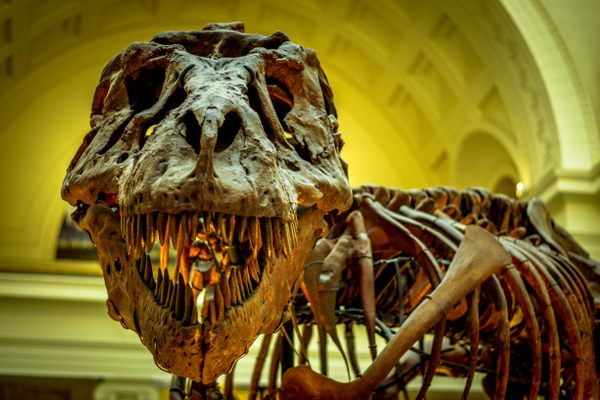Found: A New Species of Lizard in a Dinosaur’s Stomach
A prehistoric snack is now thought to be a previously unknown species.

Around 150 million years ago, a hungry Compsognathus longipes chowed down on a long-tailed creature similar to a modern-day gecko. The meal may have gone down easily, but the turkey-sized dinosaur didn’t survive long enough to digest it. When the dino’s fossil was excavated in Germany in the nineteenth century, the early lizard’s remains still sat in its abdominal cavity.
Researchers have known about the preserved snack for years, and had identified it as an extinct ancient lizard called Bavarisaurus macrodactylus. But a paper recently published in the Zoological Journal of the Linnean Society points to the creature’s skull anatomy to make the case that it’s actually a new species altogether. A researcher formerly of the American Museum of Natural History cheekily dubbed the new species Schoenesmahl dyspepsia, which, according to Nature, translates to something akin to “beautiful meal that is difficult to digest.”
It’s not unheard of for fossils to be nestled inside other ones. In 2016, paleontologists lifted a trifecta of fossils from a German quarry: an insect inside a lizard inside a snake. Science Alert christened the discovery a “turducken for the ages.” Sophisticated imaging technologies now let scientists get ever-more-detailed looks into so-called “Inception fossils” without having to crack them open. Perhaps surprisingly, stomachs can make pretty good incidental time capsules. Digested food, along with dung, has allowed scientists to retrace the stomping grounds of prehistoric megafauna. (Full bellies have also been used to make surprising forensic revelations as well.) Now, this long-dead lizard has a stomach to thank for its place in the paleontological record.















Follow us on Twitter to get the latest on the world's hidden wonders.
Like us on Facebook to get the latest on the world's hidden wonders.
Follow us on Twitter Like us on Facebook